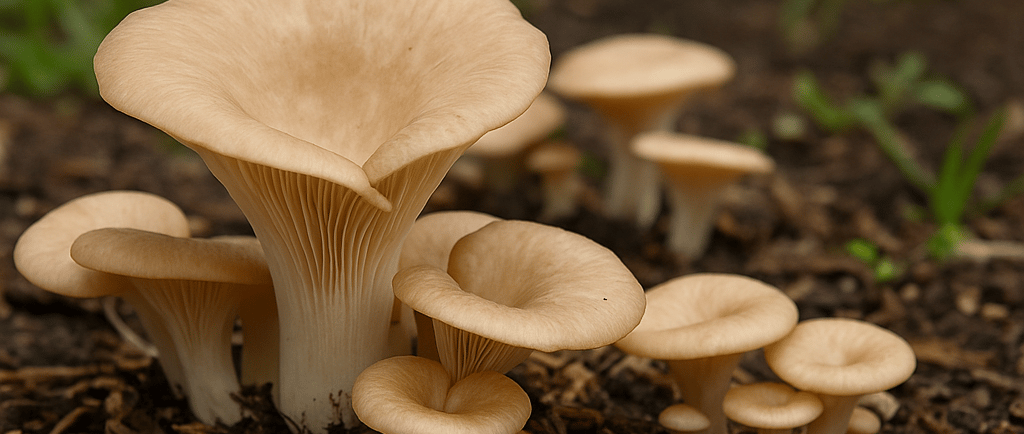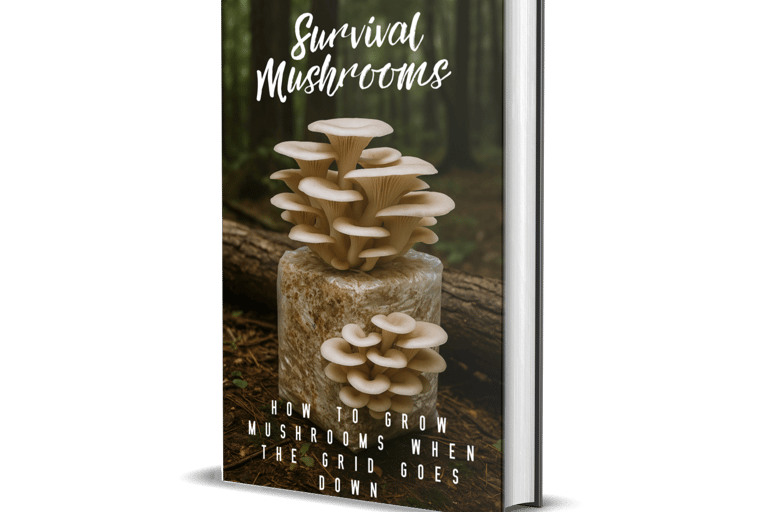How Long Do Mushroom Patches Last?
Curious how long mushroom patches can keep producing? Learn what factors affect their lifespan, how to maintain them, and tips for making your patch last season after season.
GROWING
7/11/20252 min read


How Long Do Mushroom Patches Last?
If you're planting a mushroom patch in your backyard or as part of a survival strategy, one question naturally comes up: how long will it last? The idea of setting up a self-sustaining mushroom bed that fruits year after year is appealing, but the answer depends on several key factors. Here's what you need to know.
1. Species Matters
Some gourmet species like wine cap (Stropharia rugosoannulata) and certain oysters (like blue oyster or phoenix oyster) are known to persist longer than others. Wine caps especially are famous for coming back each year with little maintenance. Pink oysters, on the other hand, are more tropical and don't overwinter well in cold climates.
2. Conditions Are Everything
A patch that gets occasional moisture (like from rain or sprinklers) and stays shaded has a much better chance of surviving through the seasons. Direct sunlight, dry soil, and poor airflow can shorten the life of a patch quickly. Mulching with wood chips not only feeds the mycelium but also protects it from drying out.
3. Substrate Gets Depleted
Eventually, the wood chips, cardboard, straw, or whatever substrate you used will get eaten up. Most patches need to be "fed" again after a season or two. Adding a new layer of chips or burying fresh grain spawn can help extend the life of the bed.
4. Nature Helps or Hurts
Sometimes nature does the work for you. If you let some of your mushrooms mature and drop spores, they might colonize new areas nearby. But nature also brings competitors: bacteria, bugs, molds, and even squirrels digging into your patch. These factors can reduce yields over time.
5. Realistic Expectations
Most low-tech outdoor patches produce well for 1–2 years before needing a refresh. Some lucky growers report mushrooms popping up for 3–4 seasons straight, especially in temperate zones with good rain and tree cover. If you want a patch to last, plan to check on it, rehydrate during dry spells, and feed it once a year.
Bonus Tip: Don’t Harvest Everything
If you're serious about longevity, let some mushrooms fully mature and rot back into the ground. This helps the patch stay active and improves the odds of long-term fruiting.
Final Thoughts
Think of mushroom patches like gardens. A little care goes a long way, but even low-maintenance approaches need some attention. Whether you’re prepping for the future or just experimenting in the backyard, understanding patch lifespan can help you plan smarter and harvest longer.
I remember burying old grain spawn and substrate in my backyard years ago, just for fun—not even expecting results. A couple of weeks after a good rain, I saw oyster mushrooms pushing up through the mulch. That moment stuck with me. It’s what made me realize how low-effort and sustainable outdoor patches can really be, especially when you work with nature instead of against it.
Ready to set up your own low-maintenance patch? See my step-by-step on Starting a Backyard or Off-Grid Mushroom Patch.
Looking for a deeper dive? I put together a complete SHTF Mushroom Growing Guide that shows how to grow with minimal gear, plus the tools I recommend.
Cultivation
Helping you master gourmet mushroom cultivation — on or off the grid.
© 2024. All rights reserved.


